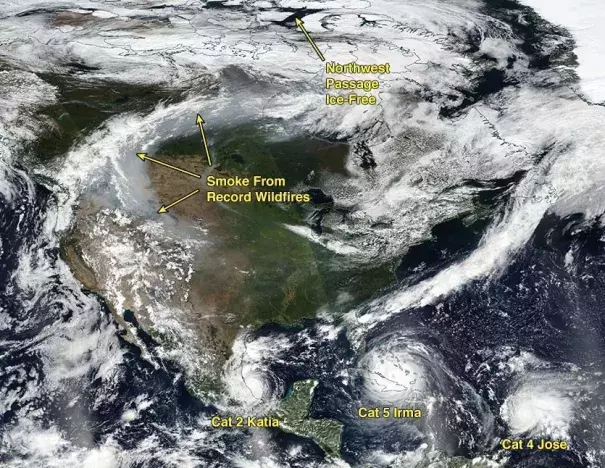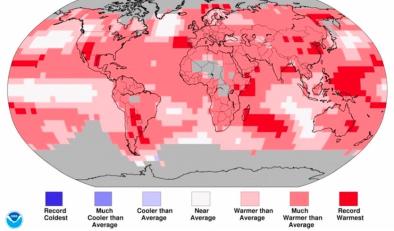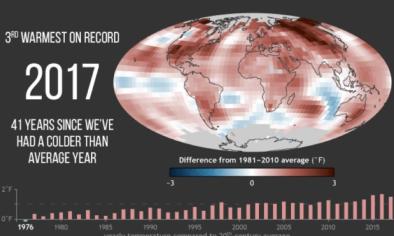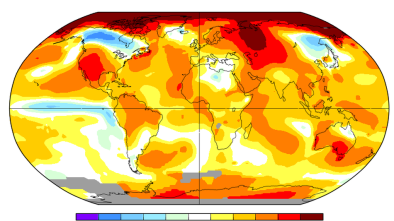Top Ten Global Weather/Climate Events of 2017: A Year of Landfalls and Firestorms

In 2017, the atmosphere seemed to have it in for the United States. Globally, the lion’s share of destruction from each of the world’s four costliest weather-related disasters occurred within U.S. states and territories, and each one involved either hurricanes or wildfires. Through September, NOAA tallied 15 U.S weather disasters in 2017 with a cost of at least $1 billion, and the December wildfires in Southern California may well add another billion-dollar disaster to the total. This would tie 2017 with 2011 for the most billion-dollar weather disasters in any year in U.S. history.
Granted, the U.S. is a meteorological crossroads that’s renowned for getting virtually every type of meteorological mayhem, but it’s unusual for the nation to have such a lopsided share of the global toll from a year’s worth of weather/climate disasters. One preliminary damage assessment put the U.S. damage from Maria, Harvey, and Irma at $207 billion, with another $25 billion in non-U.S. damage. Thus, our picks below for the planet’s highest-impact weather and climate events of 2017 are very U.S.-centric.
Three events tied for #1 in 2017: Hurricanes Harvey, Irma, and Maria
The most hellacious series of Atlantic hurricanes since 2005 produced catastrophic damage in a number of Caribbean nations as well as Puerto Rico, the U.S. Virgin Islands, and the U.S. mainland. One reason: at the peak of hurricane season, sea-surface temperatures were at near-record warm levels across most of the tropical Atlantic. Moreover, upper-level winds (with an assist from La Niña) were unusually supportive for allowing hurricanes to thrive (bringing low wind shear), and steering currents favored trajectories toward land, with a grand total of 23 landfalls for the year. The period from late August to early October saw a nearly unbroken string of Atlantic hurricanes in progress, and September produced the largest amount of accumulated cyclone energy (ACE) of any month on record.
Related Content






